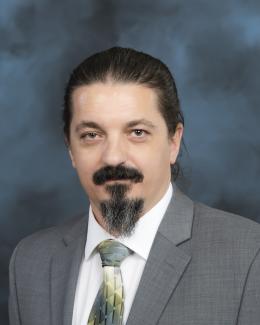
(from the Fall 2016 issue of ORNL Review)
Additive manufacturing—commonly known as 3-D printing—is transforming manufacturing by allowing the design and development of highly complex objects that would be impossible to create with traditional manufacturing methods.
Additive manufacturing is now at the tipping point of being broadly adopted by industry. The missing piece is certification and validation—in a nutshell, ensuring that printed objects are within their design specifications and have the material properties required for their final use.
To advance this technology—and to address certification requirements in particular—ORNL’s Manufacturing Demonstration Facility is developing a data analytics framework for manufacturing.
By integrating scientific knowledge from researchers focusing on material development, method optimizations, and data analytics, this framework aims to provide a better understanding of the material properties of additively manufactured components.
For materials scientists the ability to visualize this information in 3-D provides new insight into object quality and spatial information. The MDF reached out to the Oak Ridge Leadership Computing Facility’s Advanced Data and Workflow Group to support such an effort.
The project began last fall after MDF staff realized they needed access to high-performance computing resources and visualization expertise to study variables related to additive manufacturing at a terabyte scale with extremely high resolution.
“We have experts who can help us do this at ORNL, so it made perfect sense to reach out to the Advanced Data and Workflow Group and leverage its expertise in the field,” MDF researcher Vincent Paquit said. “We can gain greater understanding of the manufacturing process just by visualizing the data and manipulating the variables—something that the group is great at.”
Testing 3-D printed objects begins with building the same part with several different parameters. The printing process can produce defects such as porosities—gaps in the material structure that can lead to part failure—so MDF researchers must understand what printing parameters lead to these defects and which processes ensure the highest-quality products.
“Currently, 3-D printing is at a stage where it’s not mature enough to have set parameters that guarantee a product with no defects,” said Sreenivas Rangan Sukumar, group leader for the Advanced Data and Workflow Group. “By visualizing the object, the MDF can determine what is and isn’t causing the defects.”
To study its printed objects, the MDF requires high-quality images generated at interactive frame rates on large datasets containing many variables. Off-the-shelf visualization tools cannot handle such demands, but the OLCF’s EVEREST visualization facility, with its custom software and the necessary computing systems, can.
The visualization workflow developed by Sukumar’s group pulls data in real time from the MDF to the OLCF, including input from the computer-aided design model, image data, and immediate measurements from the printer. The data can then be retrieved by EVEREST, so MDF staff can visually determine how printing parameters and processes influence the printed component’s porosity, malleability, and other structural characteristics, according to Mike Matheson, a member of Sukumar’s group and the primary workflow developer.
The MDF is currently the main user of this workflow, but Sukumar’s group began working to expand the service after additional OLCF users expressed interest in 3-D visualization.
Moving forward Sukumar’s group plans to develop a mechanism that will allow the MDF to remotely view its 3-D artifacts.
Facility staff will be able to wear a virtual-reality headset and walk through the 3-D models from anywhere.
By helping to ensure products get certified for quality, the visualization work is moving 3-D printing one step closer to transforming how high-quality commercial parts are made.
“Certification is the ultimate goal,” Sukumar said. “We must certify that the 3-D printed object is what we set out to build and that it is built correctly.”



